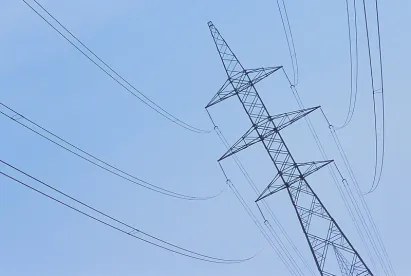In FERC v. EPSA, issued on January 25, 2016, the U.S. Supreme Court ruled, in a 6-2 decision, that Federal Energy Regulatory Commission has jurisdiction under the Federal Power Act (FPA) to regulate demand response transactions in wholesale electricity markets administered by independent system operators (ISOs) and regional transmission organizations (RTOs). The Court also upheld, as reasoned decision-making, FERC’s determination that ISOs/RTOs should pay the same compensation (i.e., the market clearing price) to generators and demand response resources participating in the day-ahead and real-time energy auction markets. In so holding, the Supreme Court may have paved the way for FERC to provide regulatory incentives for other emerging electricity transactions and practices that blur the historical distinction between FERC-regulated wholesale sales and state-regulated retail sales.
Justice Kagan’s opinion for the Court recognizes that the federal-state jurisdictional divide is prone to dispute “because — in point of fact if not of law — the wholesale and retail markets in electricity are inextricably linked.” Slip op. at 1. The interrelatedness of wholesale and retail transactions and regulations will become more pronounced with the spread of distributed generation, energy storage capabilities, end-use energy conservation measures, and other transformative transactions. In this blog post, we offer some observations on how generalizable the Court’s jurisdictional analysis in FERC v. EPSA may prove to be for these future transformative transactions.
1. The statutory source of FERC’s jurisdiction. The Court’s jurisdictional analysis starts with FPA Section 201, which divides FERC and state jurisdiction as between, respectively, wholesale and retail sales. The Court confirmed that “the law places beyond FERC’s power, and leaves to the States alone, the regulation of ‘any other [non-wholesale] sale’–most notably, any retail sale–of electricity.” Slip op. at 1. Given this disjunction between federal and state jurisdiction, the D.C. Court of Appeals had held below that demand response, which entails a reduction in end-use consumption, while not a “sale” of any kind, is “part of the retail market,” and, therefore, falls on the state side of the jurisdictional boundary. See Slip op. at 12-13. Justice Kagan’s jurisdictional analysis is not, however, bottomed on whether demand response is, as a non-sale transaction, part of the wholesale or retail market. That is because her jurisdictional analysis of the FPA does not start and end with Section 201.
Significantly, FERC v. EPSA grounds FERC’s jurisdiction also in FPA Sections 205(a), 205(c) and 206(a), which, in slightly varying language, require the Commission to review and to regulate the “just and reasonableness” not only of “rates and charges” for wholesale sales, but also rules, regulations, classifications, contracts and practices “affecting or pertaining” to such rates and charges for wholesale sales. Jurisdictionally, the Supreme Court has now definitively held that, under Sections 205 and 206, “FERC has the authority–and, indeed, the duty–to ensure that rules or practices “affecting” wholesale rates are just and reasonable.” Slip op. at 15.
2. “Affecting” jurisdiction. Unlike Section 201’s grant of jurisdiction, which demarks an express limitation on the grant of federal jurisdiction, Sections 205 and 206 contain no express limitations on the scope of practices that could “affect” wholesale rates. To avoid an unintended expansion of FERC’s authority “to some surprising places,” FERC v. EPSA adopts a jurisdictional limitation: “we now approve a common-sense construction of the FPA’s language, limiting FERC’s ‘affecting’ jurisdiction to rules or practices that ‘directly affect the [wholesale] rate.’” Slip op. at 15 (emphasis in original).
FERC v. EPSA does not define “directly,” suggesting that the limits of FERC’s “affecting” jurisdiction will need to be determined on a case-by-case basis, both by FERC and by reviewing courts. In future cases involving transformative transactions, comparisons will surely be made to the factors cited by Justice Kagan in finding that “the rules governing wholesale demand response programs meet that [“directly affecting”] standard with room to spare.” Slip op. at 16. Justice Kagan notes first that wholesale demand response programs involve bids submitted directly into the ISO/RTO wholesale auction markets for energy to balance wholesale supply and demand in order to bring down the wholesale rate and to enhance reliability of the grid. “Wholesale demand response, in short, is all about reducing wholesale rates.” Slip op. at 16. Query whether FERC’s “directly affecting” authority must be “all about” reducing wholesale rates through direct participation in organized auction-based wholesale markets. For example, could FERC’s “directly affecting” authority extend to prescribing rules permitting or requiring distributed energy resources, including roof-top solar and behind-the-meter storage, to participate in supplying energy into ISO/RTO wholesale markets? Further, could FERC’s “directly affecting” jurisdiction extend to rules regulating the netted price that distributed energy resources of all kind, including energy conservation, receive for providing surplus energy to utilities for resale, even if such energy is deemed delivered on local distribution facilities? And, may FERC regulate, and even mandate, inclusion of carbon adders to wholesale transactions? Time will tell.
3. The bar against regulating retail electricity sales. FERC v. EPSA does not give FERC carte blanche authority over practices “directly affecting” wholesale rates, transactions, and markets. The Court holds that FPA Section 201’s disjunctive division of federal and state authority requires that FERC’s exercise of its Section 205 and 206 jurisdiction “does not regulate retail electricity sales.” Slip op. at 17 (emphasis in original). Just as the Court did not specifically define or establish criteria for “directly affecting,” the Court does not establish criteria for determining when a FERC rule that directly affects wholesale rates transgresses the boundary reserving to the states regulatory authority over retail sales.
FERC v. EPSA adopts a negative criterion, stating that just because a FERC regulation substantially affects the quantity or terms of retail sales, FERC would not necessarily transgress the States’ exclusive authority over retail sales under FPA Section 201. But, the Court’s opinion at this point leans heavily on its finding that FERC’s regulation of demand response “addresses only transactions occurring on the wholesale market.” This leaves much uncertainty as to the reach of FERC’s “directly affecting” jurisdiction to transformative transactions that have both wholesale and retail components. Here it is useful to recall Justice Kagan’s injunction that as a factual matter, “the wholesale and retail markets in electricity are inextricably linked.” Slip op. at 1. Thus, it is unclear how far FERC regulation of distributed energy resources’ participation in wholesale markets can go, since distributed energy resources are often physically integrated into state-regulated utilities’ distribution systems and priced on a net basis under State retail tariffs. Again, time will tell how FERC and the courts develop criteria for demarking the absolute, but blurry, boundary between permissible FERC regulation of transformative transactions that directly affect wholesale markets and rates, and impermissible regulation of retail sales and rates.
4. Justice Scalia’s dissent. Justice Scalia’s jurisdictional analysis differs from the Court, even though he agrees that FERC has the authority under FPA sections 205 and 206 to regulate practices “affecting” wholesale rates and that the Court’s “direct effect” test is a reasonable limit on such authority. Dissent at 1. Justice Scalia (with whom Justice Thomas joined) parts company with the rest of the Court (except Justice Alito, who recused himself) on the threshold applicability of the limits on FERC jurisdiction established under FPA section 201. Justice Scalia believes the core issue is whether the FERC demand response rule permissibly regulates sales at wholesale, not, as he characterizes the Court’s test, whether the FERC rule impermissibly regulates retail electricity sales. Dissent at 2. This distinction is important to Justice Scalia because he argues that FPA section 201 “excludes from FERC’s jurisdiction all sales of electric energy except those that are demonstrably sales at wholesale.” Dissent at 3 (emphasis in original).
Justice Scalia concludes that demand response, by its very nature, does not involve a wholesale sale. The FPA defines a “sale at wholesale” to be a sale to any person “for resale.” Justice Scalia observes that demand response participants (aggregators or end-users) do not resell electricity, but consume less of it. Justice Scalia argues that FERC’s jurisdictional reach turns on the identity of the putative purchaser of the electricity (i.e., must be a reseller and not an end-user) not the market in which transactions occur. Thus, Justice Scalia finds irrelevant the fact, relied on heavily by the Court, that FERC-regulated demand response transactions occur through bidding in ISO/RTO administered wholesale energy auction markets. Dissent at 3. Query how Justice Scalia would apply his “identity of purchaser” test to a FERC rule regulating distributed energy resources’ sales of surplus energy to a local utility, which is a reseller?
5. The curious role of Chevron in construing FERC jurisdiction. The Chevron doctrine commands courts to defer to an agency’s reasonable construction of its statutory authority if the applicable statute is silent or ambiguous, but not if the statute unambiguously forecloses the agency’s assertion of authority. City of Arlington v. FCC, __ U.S. __, 133 S.Ct. 1863, 1870-71 (2013). Interestingly, neither Justice Kagan, for the Court, nor Justice Scalia, in dissent, considered giving any Chevron deference to FERC’s interpretation of its jurisdictional authority over demand response. Each opinion finds FERC’s authority under the statute to be “clear,” truncating the Chevron analysis. Slip op. at 14 n.5; Dissent at 2. It is certainly curious that two opinions that construe FERC’s statutory authority so differently under FPA Section 201 would find no ambiguity in the statute. Perhaps, this is an indication that the Court is growing less comfortable in giving agencies Chevron deference as to core jurisdictional provisions implicating federalism concerns.




 />i
/>i
